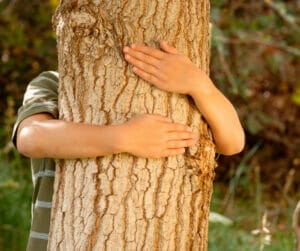 In Portland, Oregon, we work hard to protect the environment. Towering volcanic peaks, thunderous waterfalls, and green trees as far as the eye can see — these are the things we brag about when we chat with our friends who live in regions with no scenery. The health of one tree is a microcosm of the health of an entire ecosystem. We all have a stake in making sure that our trees stay healthy. The best way to ensure that happens is by educating ourselves about tree and plant health care.
In Portland, Oregon, we work hard to protect the environment. Towering volcanic peaks, thunderous waterfalls, and green trees as far as the eye can see — these are the things we brag about when we chat with our friends who live in regions with no scenery. The health of one tree is a microcosm of the health of an entire ecosystem. We all have a stake in making sure that our trees stay healthy. The best way to ensure that happens is by educating ourselves about tree and plant health care.
That’s why we thought it would be a good idea to put together a Tree Health Care Guide to help readers of Urban Forest Pro’s blog learn the ins and outs of tree protection. By ins, we mean some of the things (bugs and disease mostly) that can get inside a tree and make it sick. By outs, we mean ways we can protect and maintain our environment in order to get the most out of Portland’s much-admired urban tree canopy.
The Tree Health Care Guide begins below. But first, let’s examine some of the ways Portland works to honor its environment and protect its trees and shrubs from insects and diseases.
Portland, Oregon, Trees
Truly, Portland is a place like no other. Consider the fact that Vivek Shandas, a Portland State University professor, created a forum in 2018 that allows citizens to tell stories about the trees in their lives. Hundreds of people responded. According to a story on KGW.com by Nina Mehlhaf, “Trees can remind us of lots of things, and we love them here in the Northwest. So much so, Portland is the first city in the world to create an interactive map to tell their stories.”
Shandas and a colleague crafted a website (on their own time, without using any public funds) called CanopyStory.org.
“The website shows a wide map of the Portland-metro area,” Mehlhaf reports. “You can zoom into neighborhoods, and further down into the green dots marking trees 50 feet or higher.”
What does this tell us? It tells us that Portlanders have a special relationship with the trees in their neighborhoods.
This is as it should be, and it’s why Urban Forest Pro is happy to partner with our Northwest neighbors to protect our urban tree canopy and to make sure that every Portlander can partake in the benefits of living in a green city.
Portland’s Urban Tree Canopy
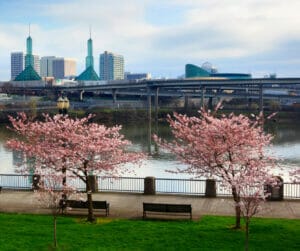 Urban Forest Pro and the urban tree canopy go hand in hand in Portland. (Or is it hand in limb?) We’re proud to live and work in this region and to help keep our beloved tree canopy healthy and sustainable.
Urban Forest Pro and the urban tree canopy go hand in hand in Portland. (Or is it hand in limb?) We’re proud to live and work in this region and to help keep our beloved tree canopy healthy and sustainable.
Portland has been named one of the Top 10 cities for urban trees by American Forests. The National Arbor Day Foundation has honored Portland as a “Tree City USA” 41 times. Of course, cities and the people who live in them have environmental, ecological, and aesthetic reasons for wanting to protect that urban tree canopy. (It’s also why so many cities work so hard to regulate and enforce tree permitting.)
The Portland Plan, adopted in 2012, specifies that “Portland’s existing tree canopy covers about 26% of Portland’s land area. The current goal is to have trees cover at least 33% of the city.”
Urban Forest Pro is fully on board with that plan. And as one of the city’s “Local Tree Care Providers,” we have a long and fruitful relationship with Portland, which helps us help our clients. After all, healthy trees mean clean air and soil, cleaner water, and a better quality of life for all of us.
About Urban Forest Pro
The arborists at Urban Forest Pro are Portland’s tree health care experts: tree pruning, tree removal, tree planting — you name it, we’ve done it. Each of our arborists is certified by the International Society of Arboriculture or an arborist in training. That’s a claim few Portland tree service companies can make.
As a full-service tree company, we can help guide our clients to the right solutions for them, their properties, and their trees. Our friendly and helpful arborists are ready to assist you. To meet with an ISA Certified Arborist, just fill out our contact form.
And now … on with the show (in alphabetical order)!
Tree Health Care Guide
The following Tree Health Care Guide offers a brief overview of some of the most common problems in tree care. If you have any questions, please don’t hesitate to get in touch.
 Borers
Borers
Bugs that bore holes in pine trees are more than a nuisance; they can devastate Portland’s tree canopy. Same goes for unchecked borer damage in maple trees.
Take a look at the dramatic intro to the Oregon State University Department of Horticulture’s discussion: “The weeping trees await their destiny: an ignoble burial in the burn pile. Their fate in the pyre driven by their holy wounds, the telltale signs of borers.”
There are a lot of boring pests in Oregon, including ambrosia beetles, flat-headed borers, and clearwing moths. It’s best to contact a certified arborist at Urban Forest Pro if you think you have a borer infestation in your trees.
Crabapple Blight
Blight is a plant disease that can be caused by fungi such as mildews and rusts. For the crabapple (Malus) in the Pacific Northwest, affected trees typically have malformed fruit plus “yellow-orange to red cup-shape pustules” on the fruit and its leaves.
Crabapple blight can be controlled with a combination of chemical and cultural control (removing “alternate hosts”). Don’t apply chemicals if the fruit is to be consumed!
Tree blight treatment can vary depending on species and location, so be sure to get a hold of a certified arborist at Urban Forest pro to discuss the problem and the treatment options available.
 Evergreen Tree Diseases
Evergreen Tree Diseases
Forest managers in the Pacific Northwest are extremely concerned about a deadly plant disease infecting evergreen trees. Be sure to contact an arborist if you think any of your evergreen trees are affected.
“Sudden oak death showed up in Douglas and grand fir saplings growing under an infected tanoak tree,” reports Oregon Public Broadcasting. “The trees had wilted tips, needle loss, and discoloration.”
In addition, evergreen tree diseases can range from the aforementioned sudden oak death to cankers, rust, and shoestring disease.
Forest Diseases
As the Oregon Forest Resources Institute reports, “Native tree diseases are a particularly common menace to Oregon’s western forests. Among the most prevalent diseases in Oregon are Swiss needle cast and laminated root rot.”
Dwarf mistletoe is also a prevalent species of parasitic plant that can cause tree death.
With such an extraordinary abundance of forested land in Oregon, the potential for quickly spreading forest diseases means those of us in the tree health care industry must pay close attention to the trees in our own backyards since they can sometimes be a sign of bigger problems elsewhere.
 Leaf Diseases
Leaf Diseases
Leaf diseases in Portland, Oregon, are an unfortunate and relatively common occurrence. According to the city of Portland (and our own experience), some of the more prevalent leaf diseases include (or are caused by):
- Anthracnose: a fungal disease common to dogwoods, sycamores, ash, oak, maple, and walnut trees
- Aphids: These insects feed on plant sap (most commonly on linden and tulip trees) and produce sticky honeydew as a waste product.
- Dutch Elm Disease: Absolutely lethal to elms and caused by a fungus, it’s often the culprit behind wilting, brown leaves on a single branch or one portion of the tree canopy.
- Elm Leaf Beetle: These beetles feed on elm leaves, leaving behind a lacy, crumbling path of destruction.
- Emerald Ash Borer: You’ll know this beetle by its metallic-looking green armor, although, according to the city of Portland, they haven’t been found in Oregon yet. Like the elm leaf beetle, treatments typically include the application of insecticides.
- Hawthorne Leaf Blight: If you notice small, reddish to reddish-brown spots, Hawthorne leaf blight could be the cause.
- Thousand Cankers Disease: A fungus that causes cankers to grow under the walnut tree’s bark.
- Verticillium Wilt: Verticillium wilt works its way up maple, ash, dogwood, and other trees via a soil-dwelling fungus.
- Web Worm and Tent Caterpillar: Caterpillars can create webs and/or tents in the branches of fruit trees, cottonwoods, aspen, and other trees.
Rhizosphaera Needle Cast
Needle cast diseases cause spruce trees to “cast off” their older needles, leaving just the young needles at the tips. This can cause your trees to like they’re dying. Fortunately, these afflictions, including rhizosphaera needle cast (caused by the rhizosphaera fungus) are treatable.
Needle cast affects many Pacific Northwest trees, including Douglas fir and western hemlock. As with many tree diseases, treatments include both cultural and chemical controls. Cultural controls include avoiding overhead irrigation that leaves plants wet for long periods of time. Chemical controls are best left to certified arborists, such as those at Urban Forest Pro.
 Sapsucker Holes
Sapsucker Holes
For the most part, knowing how to get rid of sapsuckers and sapsucker holes is really about knowing how to learn to live with them and their damage.
According to Oregon State University, “Sapsuckers can damage trees in nurseries and landscapes. The damage is sometimes mistaken as insect damage.”
Sapsuckers are a species of woodpecker. They feed by chewing so-called “sap wells” in tree bark and then feeding on the sap. Pacific Northwest Pest Management Handbooks says that wrapping burlap around affected areas can deter returning sapsuckers. There are several other options, however, all with varying degrees of effectiveness.
“Sticky repellents applied to the tree bark are also used, as well as hanging bright, shiny objects such as pie tins, streamers, or beach balls as scare devices,” PNW Handbooks writes.
Like all woodpeckers, sapsuckers are protected by the Federal Migratory Bird Treaty Act, so a permit is required for lethal control. However, as the PNW Handbook cautions, “sapsucker damage is just part of living with nature, something to be endured as an occasional inconvenience or even enjoyed as natural wildlife activity.”
Sudden Branch Drop Syndrome
Are your oak tree branches falling off? Sudden branch drop syndrome (let’s call it SBDS) is a topic of tree health care that’s both near and dear to Urban Forest Pro’s heart. As we’ve documented extensively on the UFP blog, we’ve dealt with many cases of mysteriously fallen limbs.
“Sudden branch drop, also known as sudden limb failure, happens on hot, calm days and evenings, typically in the summer,” we wrote in “Beware of Sudden Branch Drop,” one of our blog posts. “Observers will notice cracking or popping sounds just before large limbs suddenly plummet to the ground.”
Dr. Albert Kellogg, a physician, botanist, and one of the founders of the California Academy of Sciences, described sudden branch drop in his 1882 book, “Forest Trees of California.”
“Sometimes,” Kellogg wrote, “most unaccountably … strong limbs that had hitherto withstood centuries of storms, in the calm airs of late summer and early autumn, crash unexpectedly down, the fracture disclosing not the least cause of weakness.”
There remains no industry consensus on the cause(s) of sudden branch drop, but the aforementioned blog post mentions a few possibilities, as well as a few preventive measures. Take a look!
Tree Cavity Filling Foam
A typical tree cavity treatment is applying a tree cavity filling foam. Tree wounds require the diagnosis of an arborist, and many homeowners and property owners have asked about tree cavity filling foam. The results of such applications have been hit-or-miss.
Still, people want to know if such products can help deal with some of the problems we’ve summarized in this Tree Health Care Guide (holes left by borers and sapsuckers, for example). In many cases, trees have natural defenses to shore up holes and prevent disease and rot from setting in.
“Trees naturally try to seal off a wounded area in their trunk by releasing chemicals that prevent decay organisms from surviving,” writes Jeff Rugg for Creators Syndicate. “Sometimes this works; sometimes it doesn’t. Animals may enlarge the hole, which can allow decay organisms to get past the tree’s defenses.”
So will using foams do the trick? Rugg is skeptical, although YMMV.
“Using polyurethane foam isn’t necessarily the best way to care for most trees,” he writes. “As we know, dead things decay. Decay organisms — mostly fungi and insects — are found in tree trunks. It may seem like filling the hole could prevent fungi and insects from decaying more dead wood. Unfortunately, what will really happen is the foam will trap moisture in the cavity and allow these organisms to work unseen. It won’t seal all of the nooks and crannies in the cavity, and as the tree flexes in the wind, gaps will develop between the foam and the wood. Fungi and insects will survive in these gaps and perpetuate the decay process, making the gaps even bigger.”
Contact Urban Forest Pro to talk through options regarding tree cavity treatments. Read more about Are Holes in Trees Dangerous?
 Tree Trunks And Disease
Tree Trunks And Disease
There are several signs and symptoms that even the layperson can tell are indicative of possible tree trunk disease. Some of the most common queries we get regarding tree health care include questions related to tree rotting at the base, types of tree rot, the accrual of “white stuff” on tree bark, hollow tree stumps patching holes in tree trunks, how to get rid of tree fungus, and why tree trunks are turning black.
We also deal with a lot of holes in trees caused by insects, including holes in oak tree trunks, holes in maple tree trunks, and so on.
Like many similar afflictions, dead bark on tree trunks is caused by fungi. In Oregon, white pine blister rust has devastated pine trees. The cause: a non-native fungus. Tree bark fungus identification takes an experienced eye, as does tree fungus treatments. The certified arborists at UFP can help diagnose tree trunk problems, so contact us right away if you notice a problem, either with trees on your property or elsewhere.
We Go as The Trees Go
Portland, Oregon, is situated perfectly in the Pacific Northwest. With the Cascades to the east and the Pacific Ocean to the west, we’re located in the middle of an outdoor paradise. Even in the urban centers, great care is taken in providing the residents with a healthy tree canopy for year-round enjoyment.
Hopefully this Tree Care Guide will help you keep an eye on your little slice of paradise. With seasonal maintenance, proper planning, and the occasional pruning here and there, we can all keep Portland a little greener. You can tell the health of a community by the health of its trees. And we’re looking pretty good.
Contact Your Local Tree Care Experts
In need of more information about the best way to care for your trees? Do you live in the Portland, Oregon area? Feel free to contact Urban Forest Pro or give us a call – (503) 776-0934.
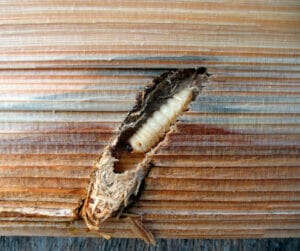 Borers
Borers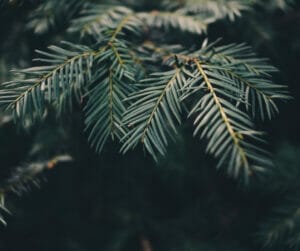 Evergreen Tree Diseases
Evergreen Tree Diseases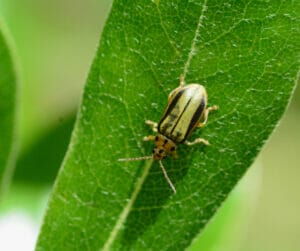 Leaf Diseases
Leaf Diseases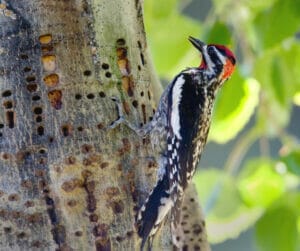 Sapsucker Holes
Sapsucker Holes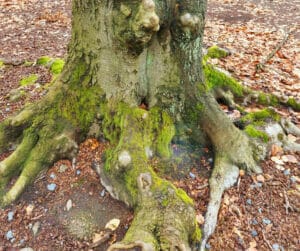 Tree Trunks And Disease
Tree Trunks And Disease